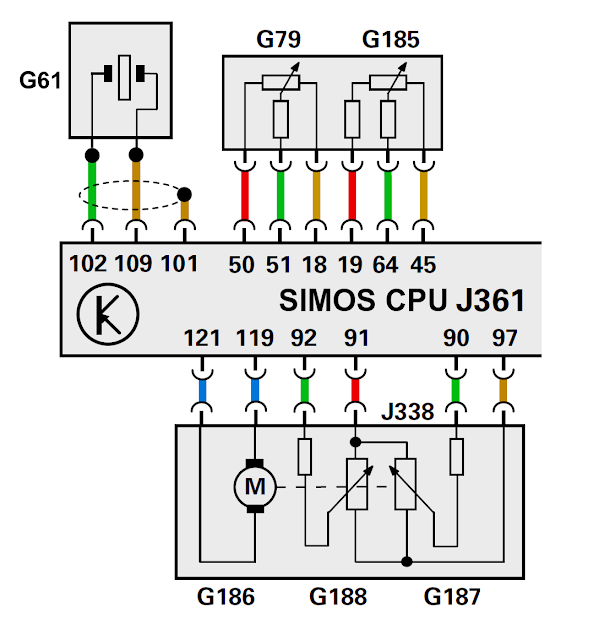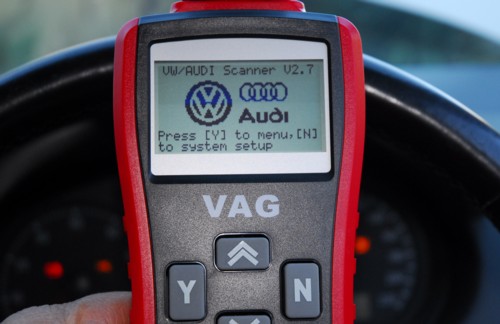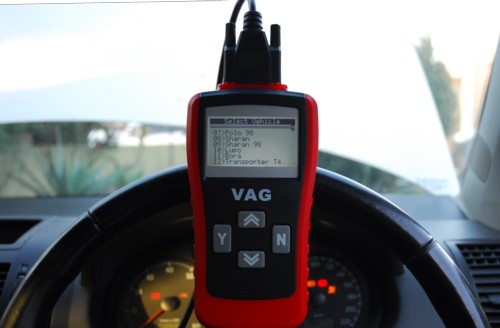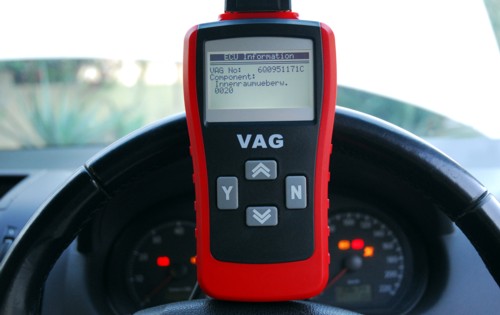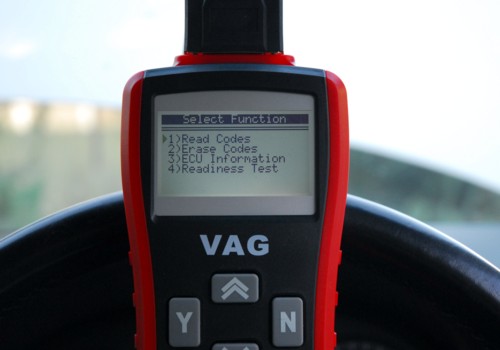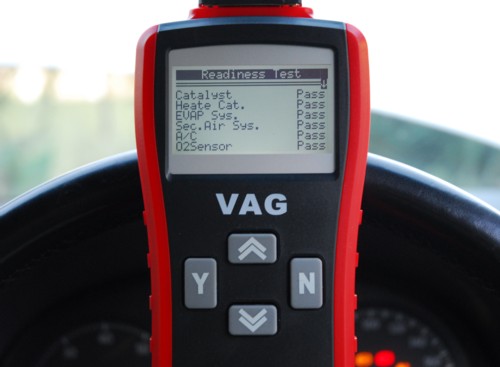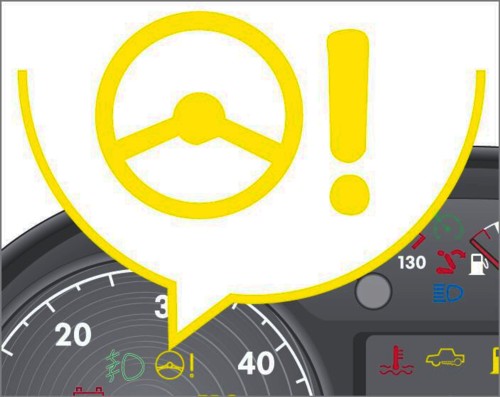VW LOGIN CODES
The "login" codes listed below work on many of the following Volkswagen vehicles listed in alphabetically. In order to use them you need a scan tool with the appropriate data connector plugged into your car's DLC connector. VCDS software and its dual-K+CAN cable is probably your best option but is fairly expensive compared to the other ranges of DIY scan tools. NB! Use these codes below at your own risk. If you don't have the necessary knowledge or expertise to make adaptation changes to your car's internal electronic module then it's best to leave them alone and refer these changes or logins to an automotive professional, or at least someone knowledgeable about OBDII Diagnostic Trouble codes (DTC), vehicle modules, intelligent sensors, the binary system, electronics and data link protocol transmission. These are extremely helpful if you've bee having one heck of a time trying to "login" to your instrument cluster to adapt some keys. Used incorrectly could turn your ECU into a brick so practice caution.
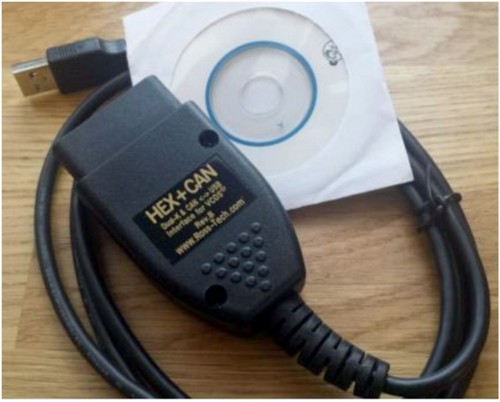 |
| Dual-K & CAN Ross-Tech VCDS kit |
Volkswagen:- (VW) Caddy (9K chassis) 1996 - 2003 and newer
Volkswagen:- (VW) Caddy (2K chassis) 2004 and newer
Volkswagen:- (VW) Corrado and newer
Volkswagen:- (VW) Crafter (2E chassis) 2006 and newer
Volkswagen:- (VW) Eos (1F chassis) 2006 and newer
Volkswagen:- (VW) Fox/Spacefox/Sportvan/Suran (5Z chassis) 2005 and newer
Volkswagen:- (VW) Gol/Parati/Saveiro (5X chassis) 2000 and newer
Volkswagen:- (VW) Golf/Jetta II (19E chassis) 1983 - 1992
Volkswagen:- (VW) Golf/Jetta/Vento/Cabriolet III (1H chassis) 1992 - 1998 and newer
Volkswagen:- (VW) Golf Cabriolet IV (1E chassis) 1999 - 2002
Volkswagen:- (VW) Golf/Jetta/Bora IV (1J/9M chassis) 1998 - 2006
Volkswagen:- (VW) Golf/Jetta/Bora V (1K/5M chassis) 2004 and newer
Volkswagen:- (VW) Golf/GTI/Jetta (1K/5K chassis) 2010 and newer
Volkswagen:- (VW) Golf Variant/Wagon (1K chassis) 2007 and newer
Volkswagen:- (VW) Golf Plus (5M chassis) 2005 and newer
Volkswagen:- (VW) Golf Mk.6 (5K chassis) 2009 and newer
Volkswagen:- (VW) LT (2D chassis) 1996 and newer
Volkswagen:- (VW) Lupo (6E/6X chassis) 1999 and newer
Volkswagen:- (VW) New Beetle/Cabriolet (1C/1Y/9C chassis) 1999 and newer
Volkswagen:- (VW) Passat (31/3A chassis) 1988 - 1994 and newer
Volkswagen:- (VW) Passat (3B chassis) 1997 - 2005 and newer
Volkswagen:- (VW) Passat (3C chassis) 2006 and newer
Volkswagen:- (VW) Passat CC (35/3C chassis) 2008 and newer
Volkswagen:- (VW) Phaeton (3D chassis) 2002 and newer "facelift", 2007 - 2008)
Volkswagen:- (VW) Polo (6N/6N2 chassis) 1994 - 2002 and newer
Volkswagen:- (VW) Polo (9N chassis) 2002 -2010
Volkswagen:- (VW) Scirocco (13 chassis) 2008 - 2009 and newer
Volkswagen:- (VW) Sharan (7M chassis) 1995 and newer
Volkswagen:- (VW) Tiguan (5N chassis) 2008 and newer
Volkswagen:- (VW) Touareg (7L chassis) 2003 and newer
Volkswagen:- (VW) Touareg (7L6 chassis) ( 2007 and newer
Volkswagen:- (VW) Touran (1T chassis) 2003 and newer
Volkswagen:- (VW) Transporter (70 chassis) 1991 - 1996
Volkswagen:- (VW) Transporter (7D chassis) 1997 - 2003
Volkswagen:- (VW) Transporter (7H/7J chassis) 2003 and newer
ENGINE
TDI Engine adaptation login = 12233 ( 4 cylinder MSA12 and newer)
EDC17 Security Access code = 12233
EDC15/16 Fuel cooling Activation code = 10000
EDC15/16 Fuel cooling De- activation code = 10001
Delete FMA Learning map = 10008
Switched EGR off for next driving cycle = 10011
DPF emergency regeneration V6 = 10016
DPF emergency regeneration 4 Cyl = 21295
Legal top speed limiter disable (AP07) = 28575
Teach differential pressure transmitter = 30605
UDS Short Trip password = 27971
ME7 ECU Login Codes = 07825
ME7 ECU Login Codes = 01283
ME7 ECU Login Codes = 11500
Default coding
ME7 ECU Login Codes = 11223
ME7 ECU Login Codes = 11463
ME7 ECU Login Codes = 11501
ME7 ECU Login Codes = 12233
ME7 ECU Login Codes = 33162
Other ECUs = 26262
Golf 1,6 FSI = 10011
Login codes for engine type AEL = 22158
Common Rail - disable top speed limiter = 10111
01283
Cruise Activation "older" vehicles
Activate ACC
= 10002
Diesel particulate filter Adaptation =
10016
Cruise Control Activation = 11463
Diesel particulate filter Adaptation = 21295
Special Customer Services login = 45678
ABS
Adaptation access MK60 = 00212
Adaptation access NDBW
= 01025
Adaptation access DBW = 04097
Adaptation access SPECIAL A6 = 09399
Adaptation access FWD = 13204
Adaptation access AWD
= 13504
Adaptation access AWD ESP = 18446
Adaptation access MK60 = 19469
Adaptation access FWD ESP = 23049
Adaptation access General = 27861
Adaptation access to basic settings = 40168
AIRBAG
Airbag Adaptation Enabling login = 20324
INSTRUMENT
Instrument Cluster Adaptation Login = 13861
CENTRAL ELECTRONICS
Central Electronics Adaptation Enabling login = 21343
Activate Cruise Control Adaptation Login = 11463
De-activate Cruise Control Adaptation Login = 16167
Activate Cruise Control Adaptation = 13647
NB! The Cruise Control System activation Drive-by-Wire throttle systems will vary for different engine types.
STEERING
Steering Angle Sensor Adaptation Login = 40168
SUSPENSION
General Login = 31564
Transport Adaptation Activation = 10273
Transport Adaptation de-activation = 41172

